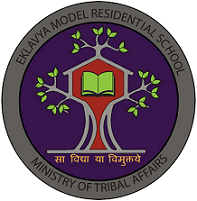In pursuance of the Article-46 of the constitutional obligation, the central govt. as well as the state governments has laid much emphasis on the spread of education in tribal areas. So, an initiative has been taken in educational development engender for Establishment of Model Residential Schools introduced during 1997-98 to provide quality education for the tribal students. It was decided by the Ministry of Tribal Affairs to utilize a part of the funds under Article 275 (1) of the Constitution, for setting up of 100 Model Residential Schools from Class VI to XII in different tribal concentrated States of the country.
To impart quality education to ST children in remote areas in order to enable them to avail of opportunities in high and professional educational courses and get employment in various sectors. This schools focus not only on academic education but on the all-round development of the students. Each school has a capacity of 480 students, catering to students from Class VI to XII and grants were given for construction of schools and recurring expenses to the State Governments under Article 275 (1) of the Constitution. Eklavya schools will be on par with Navodaya Vidyalaya and will have special facilities for preserving local art and culture besides providing training in sports and skill development. Across the country, as per census 2011 figures, there are 564 such sub-districts out of which there is an EMRS in 102 sub-districts. Thus, 462 new schools have to be opened by the year 2022. This is really a great approach by the Central and State government to raise many from the discouraged position. The EMRS scheme really paves the way for the expression "Children of today are citizens of tomorrow-with a promising future.".
Objectives of EMRS
The objective of EMRS is to provide quality middle and high-level education to Scheduled Tribe (ST) students in remote areas, not only to enable them to avail of reservation in high and professional educational courses and as jobs in government and public and private sectors but also to have access to the best opportunities in education at par with the non ST population. This would be achieved by:
- Comprehensive physical, mental and socially relevant development of all students enrolled in each and every EMRS. Students will be empowered to be change agent, beginning in their school, in their homes, in their village and finally in a larger context.
- Focus differentially on the educational support to be made available to those in Standards XI and XII, and those in standards VI to X, so that their distinctive needs can be met.
- Support the annual running expenses in a manner that offers reasonable remuneration to the staff and upkeep of the facilities
- Support the construction of infrastructure that provides education,physical, environmental and cultural needs of student life.


